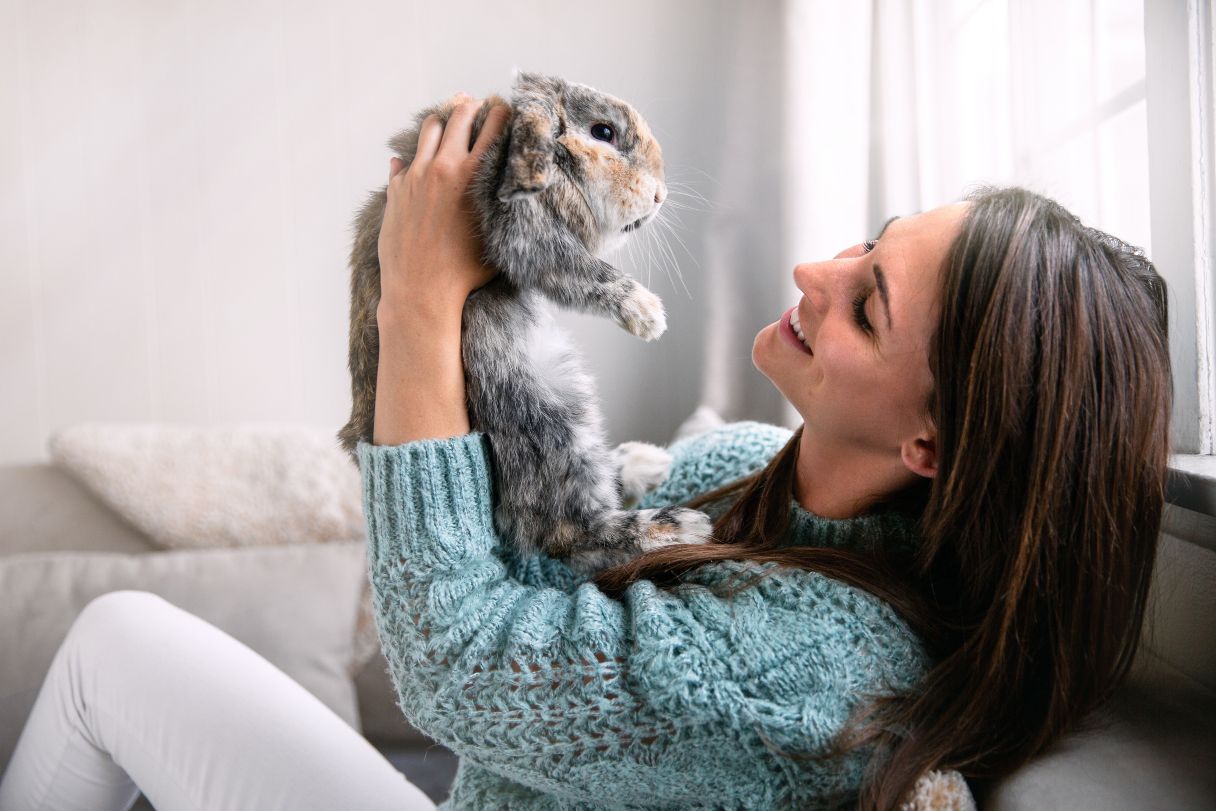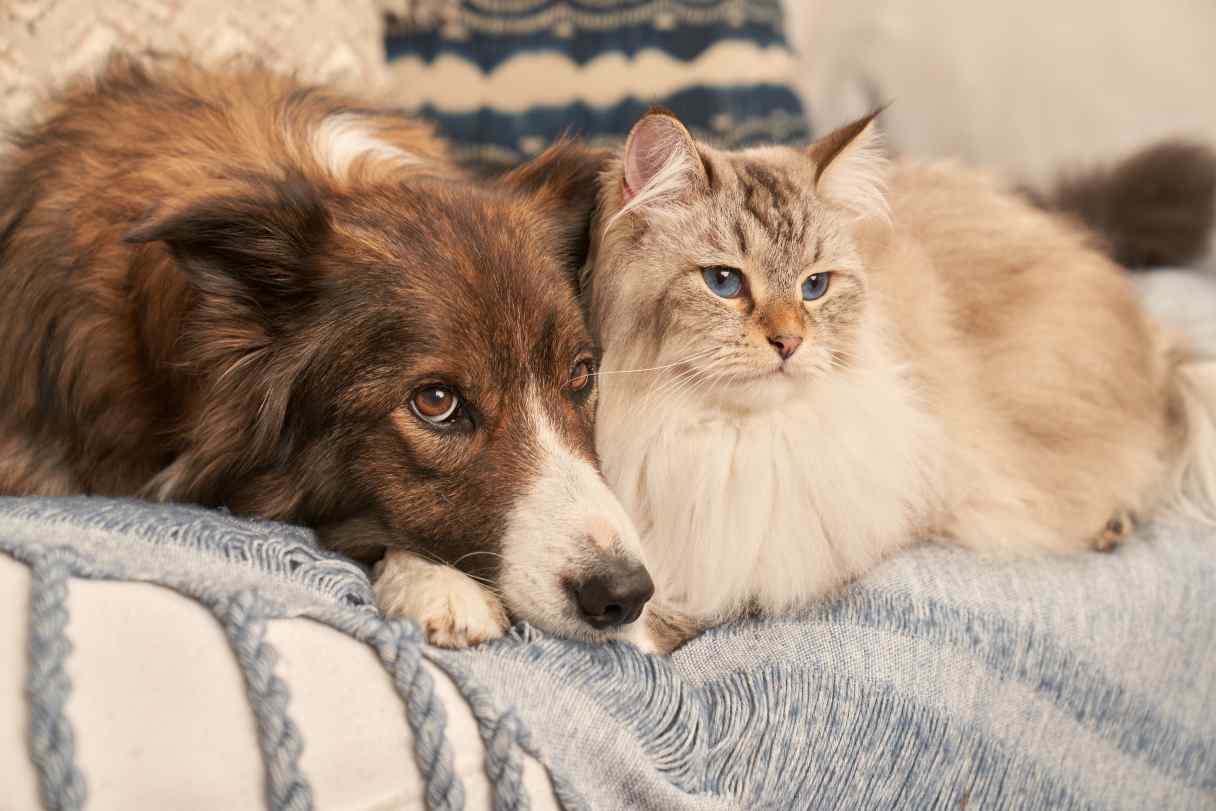Not everyone can get a dog or a cat, but that doesn’t have to mean pets are off limits. Whether you’re unable to keep up with the care and maintenance of a kitty or pup, or you live where they’re restricted, you may still be able to enjoy all the cuddly companionship and cuteness of a pocket pet.
What Is a Pocket Pet?
“Pocket pet” is a moniker generally given to cute mammals that are small enough to fit in your pocket. If you’re picturing a teacup Chihuahua or a tiny kitten, think again. Pocket pets typically refer to rodents such as domestic rats, mice, hamsters, guinea pigs and gerbils, as well as more exotic pets like hedgehogs and sugar gliders.1 The term can also stretch to include larger mammals, like rabbits or ferrets.2
The Growing Appeal of Pocket Pets
Pocket pets are increasing in popularity. Currently, more than 4 million homes in the United States own at least one of these little pets. Hamsters and gerbils are by far the most in demand, with domestic rats and mice gaining popularity.3
What makes these pets so popular? Several factors make them appealing, such as:2
- Ease of care. While these diminutive pets still require a significant commitment, they don’t typically need as much daily hands-on care and attention as cats or dogs.
- Space considerations. Rodents and other small mammals can be housed in a cage or terrarium. Though they can be taken out to enjoy time with their humans, they generally take up very little space in the home, and they may be allowed in places that restrict larger pets.
- Budget considerations. Small animals typically cost much less to feed and maintain. While they still need regular vet checkups and may need specialized care, most live much shorter lifespans than cats or dogs.4 As such, they tend to cost less to care for overall.
- They make good first-time pets. Pocket pets are an excellent way to teach children how to feed and care for an animal, skills that may eventually transfer to helping out with larger pets.4
- They’re cute! While their adorable looks alone are hard to resist, these tiny pets pack big personalities, making them sweet, friendly and lots of fun.
9 of the Most Popular Types of Pocket Pets
From the domestic to the exotic, here are the most popular pets that fall under the umbrella of pocket pets, along with a look at average lifetime costs* for owning them.
1. Hamsters
Average lifespan: 18 months to 3 years5
Hamsters are adorable, pudgy rodents that hail from China, Russia or Syria.3 Syrian hamsters are typically larger than their dwarf Chinese and Russian counterparts, and they also tend to live longer.5
They can be excitable and startle easily, and are more likely to bite than other pocket pets. However, lots of gentle handling and socialization from a young age can make them friendlier and easier to handle. They’re nocturnal, meaning that they’re mostly active at night, but they will wake up for short bursts of energy and engagement during the day.4
Cost of adopting a hamster
Over its lifespan, the cost of adopting a hamster can range from $1,370 to $2,694.6
2. Gerbils
Average lifespan: 2 to 4 years5
Gerbils are highly social little rodents that do best in pairs of the same sex.5 Friendly and curious, they’re highly active and love to climb and burrow. With good socialization, they’re easy to handle and not prone to biting without provocation.4 That said, they’re not super cuddly and don’t enjoy being held very much. Like hamsters, gerbils are most active at night.5
Cost of adopting a gerbil
Over its lifespan, the cost of adopting a gerbil can range from $2,467 to $4,849.6
3. Mice
Average lifespan: 1 to 3 years5
The teeniest of pocket pets, mice are not only super cute, they’re also big on both personality and smarts. Easy to train, they’re highly social and do best in groups or pairs.3 They tend to get lonely and stressed if left on their own. While they don’t especially like being held, they do enjoy occasional petting, and they can be trained to take a treat from your hand. Mice are naturally nocturnal, but they can be trained to be more active during the day.5
Cost of adopting a mouse
Over its lifespan, the cost of adopting a mouse can range from $940 to $1,847.6
4. Rats
Average lifespan: 2 to 3 years5
While they might not be most people’s first idea of a pet, rats are actually the friendliest and most affectionate of the small rodents, especially when handled and socialized from a young age.3 Highly intelligent and curious, they can be trained to do tricks and come when called, and they enjoy playing and cuddling with their human companions. Like mice, they’re naturally nocturnal, but can be roused for engagement during the day.4 However, although they enjoy human company, their high social needs mean they don’t thrive living alone and do best with one or more rat companions of the same sex. Even so, they require a lot of human engagement, which makes them more of a time commitment than their smaller rodent cousins.5
Cost of adopting a rat
Over its lifespan, the cost of adopting a rat can range from $1,566 to $3,078.6
5. Rabbits
Average lifespan: 8 to 12 years5
With those floppy ears and twitchy little noses, rabbits are irresistibly cute. While not exactly pocket-sized, rabbits are sometimes lumped in with pocket pets because they can be kept in a cage or hutch — although they need quite a bit of space and time outside of their hutch for exercise and enrichment.2
Keep in mind that bunnies are more hands-on and require a much bigger commitment than a rodent pet. Keeping a rabbit is more akin to having a cat. Temperaments can vary, with some bunnies loving to cuddle and hang out in your lap, while others are more independent and aloof. They can be trained to use a litter box, but it needs to be cleaned daily. Their cage or hutch will also need frequent cleaning. Bunnies are highly social and do best in pairs, but they still need a lot of human attention and engagement to stay happy. They can also learn to get along well with other household pets, especially if introduced to them at a young age.8
Cost of adopting a rabbit
Over its lifespan, the cost of adopting a rabbit can range from $15,662 to $30,784.6
6. Ferrets
Average lifespan: 5 to 7 years9
Ferrets are so much fun. Friendly, playful and completely adorable, these members of the weasel family are full of personality, and they thrive on attention and cuddles. Although they do best with another ferret playmate, especially a littermate, they can adjust to life as an only ferret as long as they get lots of human attention and company. Otherwise, they may become stressed and lonely. Ferrets need a lot of sleep — up to 18 hours a day — but they’ll be happy to wake up for playtime and meal times any time of day.9
The “masked bandit” facial markings common to many ferrets are fitting, considering that they’re both thieves and escape artists. They’ll steal and hoard anything shiny that they can get their paws on. Like rabbits, ferrets need lots of time outside of their cage for exercise and enrichment. With their wileyness and curiosity, ferret-proofing your home will be essential.10
Cost of adopting a ferret
Over its lifespan, the cost of adopting a ferret can range from $11,903 to $23,396.6
7. Guinea Pigs
Average lifespan: 5 to 6 years5
Guinea pigs are friendly rodents who purr when they’re happy and will greet you with a gleeful squeal. While friendly, they’re not especially cuddly. They enjoy petting, but don’t enjoy being held or handled much. As highly social animals, they do best in pairs or groups.11 Guinea pigs are crepuscular, meaning they’re most active at dawn and dusk.5 They’re also vision impaired and may startle easily, either freezing in place or running away when frightened.4
Cost of adopting a Guinea pig
Over its lifespan, the cost of adopting a Guinea pig can range from $7,048 to $13,853.6
8. Sugar Gliders
Average lifespan: 12 to 15 years12
Also known as sugar bears and honey gliders, sugar gliders are pocket-sized marsupials native to Australia, Indonesia and New Guinea. They’re considered an exotic pet, and are legal in all states in the U.S. except California and Pennsylvania. They are loving and thrive on human attention, but are otherwise relatively low-maintenance. These animals are the epitome of a pocket pet — they possess a pocket themselves as marsupials and are happy to ride around in your shirt pocket. While they form tight bonds with their humans, they’re happiest living in pairs.12
Cost of adopting a sugar glider
Over its lifespan, the cost of adopting a sugar glider can range from $13,704 to $26,936.6
9. Hedgehogs
Average lifespan: 4 to 6 years13
Spiny little hedgehogs are growing in popularity as pets, thanks to their mostly laid-back personalities and quiet cuteness. Native to Europe, Asia and Africa, most pet hedgehogs, like the popular African pygmy hedgehog breed, are hybrids. While they’re similar in appearance to the much larger porcupine and have stiff, spiny hair in common, they’re actually not related.13
Hedgehogs are nocturnal and naturally solitary animals, so if you’re only looking for a single pocket pet who will make a sedate little companion, this may be your match. But as an exotic species, hedgehogs are illegal in several states, so check your state laws for legality and permit requirements before attempting to adopt one.13
Cost of adopting a hedgehog
Over its lifespan, the cost of adopting a hedgehog can range from $4,699 to $9,235.6
Is a Pocket Pet Right for You?
Pocket pets might seem easy and low-maintenance, but some can actually require a significant amount of daily care and attention. Here are some things to think about to help you decide whether a pocket pet could fit well into your home and lifestyle.7
- How much space do you have? Hamsters, gerbils and mice don’t need a lot of space and can live contentedly in their habitats. Larger pets, such as rabbits and ferrets, on the other hand, require regular cage breaks and ample space to play, preferably in a pet-proofed area of your home or yard.
- How much time do you have? Even the smallest pets need daily care and attention. In addition to feeding and watering them, you’ll need to keep their cages clean and spend time engaging with them. Social animals like rats, ferrets and bunnies require frequent engagement and cuddles with their humans in order to stay happy.
- How much can you budget for their care? In addition to up-front costs like a cage and accessories, you’ll also need to keep them supplied with high-quality food and treats, clean bedding and enrichment toys. Depending on the pet, some cages, hutches or enrichment setups can be quite costly.
- How much can you budget for their healthcare? All pocket pets need routine veterinary care to maintain optimal health. But they also each may be prone to a number of health issues, including tumors.14 They’re also prone to dental issues, respiratory issues, parasitic skin conditions and serious digestive issues.15
- How long do you want to care for them? Of course, nobody wants their pets to depart, but lifespan might be a factor. A rabbit or sugar glider could be as lengthy of a commitment as a dog or cat. On the other hand, if you have small children, you might not relish the thought of them learning about pet death after only a year.
The Joys of Keeping a Pocket Pet
Pocket pets are highly rewarding pets that many people find easier to care for than more traditional dogs or cats. While they’re no less of a responsibility, they may require less time, space and money to care for, while still paying dividends in terms of companionship and affection. With so many options, it’s important to research each pet thoroughly and make an informed decision about which type of pocket pet is right for you.
Frequently Asked Questions About Pocket Pets
Do you still have questions about pocket pets? Here are some commonly asked questions and answers about them.
CareCredit Credit Card Financing for Pets
Taking good care of your pet's well-being from nose to tail is essential. Make sure to stay up to date on their regular checkups at the vet to help keep your pet happy and healthy for a lifetime of love. You can use your CareCredit credit card for pet care throughout the year for routine veterinary services as well as emergencies and surgeries.** Use our Acceptance Locator to find a veterinarian near you that accepts CareCredit.
CareCredit is there for you and your pet every step of the way; continue your wellness journey by downloading the CareCredit Mobile App to manage your account, find a provider on the go and easily access the Well U blog for more great articles, podcasts and videos.
In addition to pet care, you can also use your CareCredit credit card for dentistry, cosmetic, vision, hearing, health systems, dermatology, pharmacy purchases, spa treatments and so much more within the CareCredit network. How will you invest in your health and wellness next?
Author Bio
Jean Marie Bauhaus is a freelance writer and novelist who has been writing pet content since 2013. Her work has appeared on Forbes.com, Hill's Pet, Chewy, AKC.org and more.







